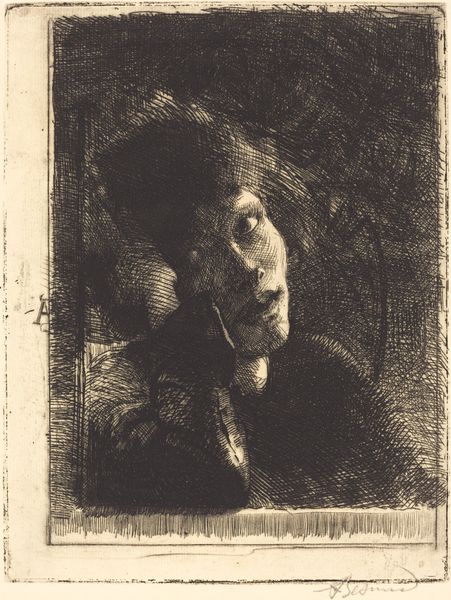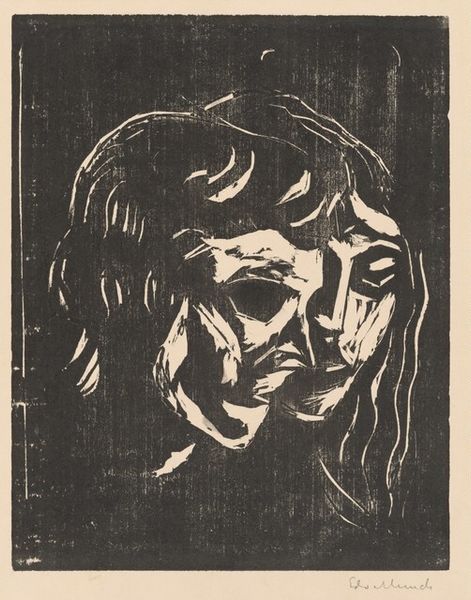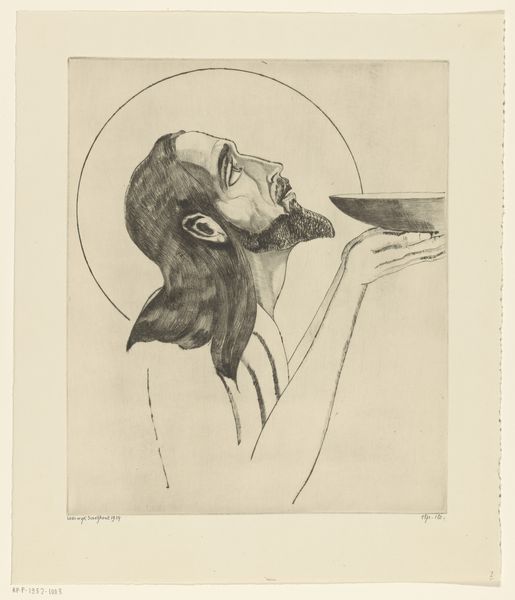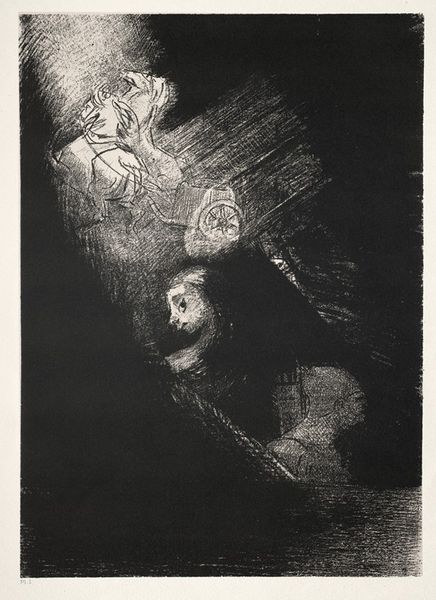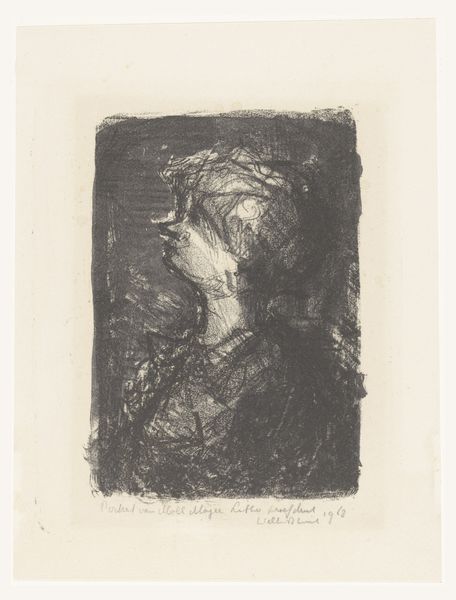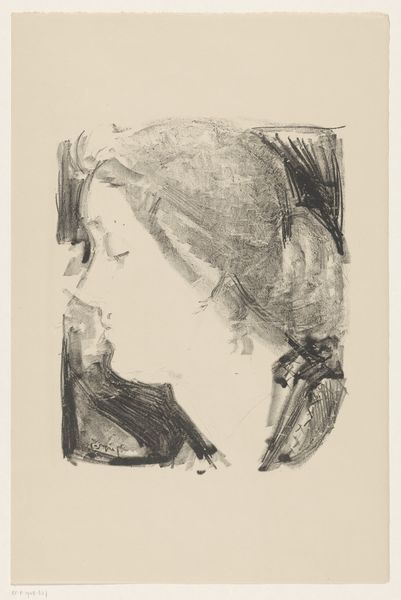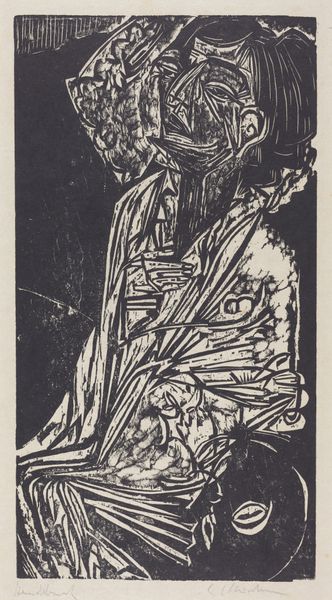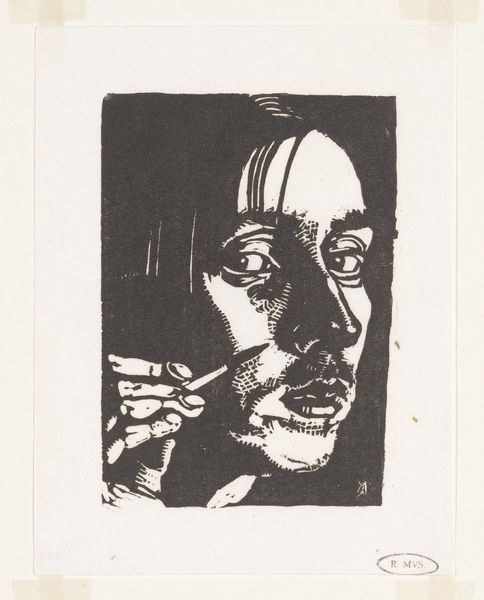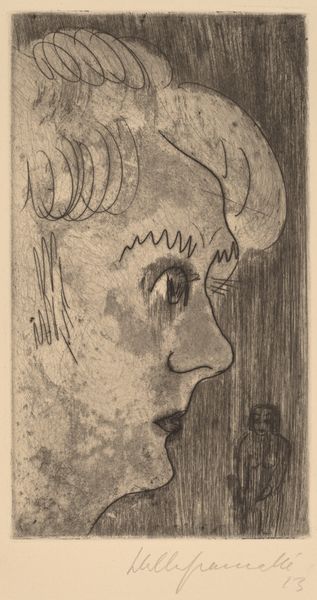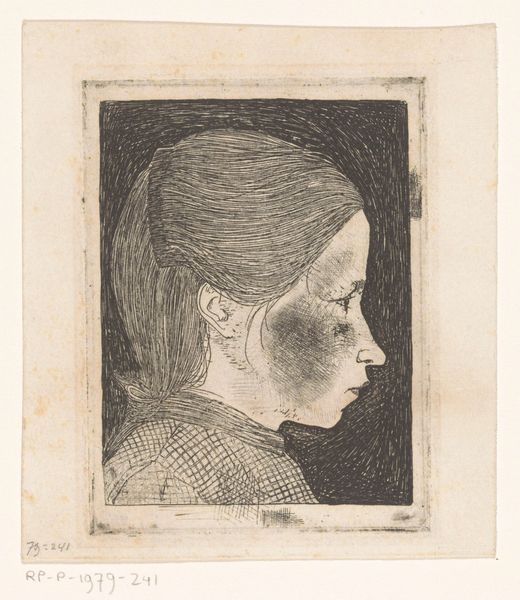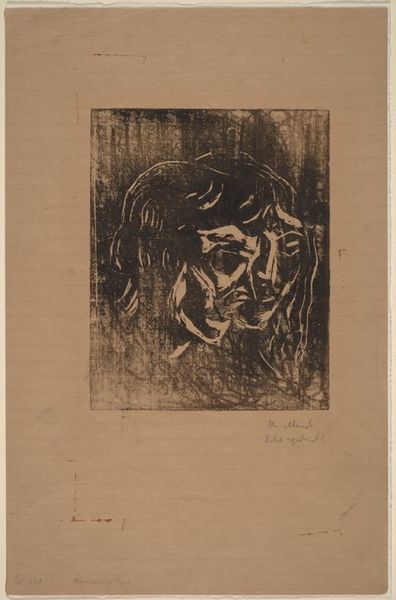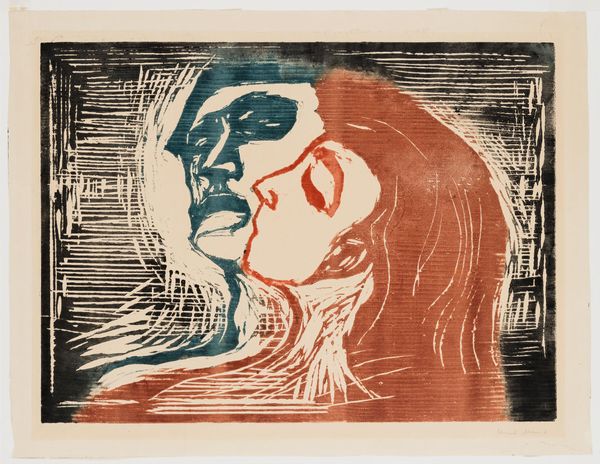
Dimensions: height 357 mm, width 278 mm
Copyright: Rijks Museum: Open Domain
Curator: Here we have Henri Verstijnen’s “Eli, Eli lama sabachtani,” a woodcut likely created between 1892 and 1931. The title refers to Jesus’s cry on the cross, “My God, my God, why have you forsaken me?” Editor: Stark. That's my immediate reaction. The harsh black and white, the upward gaze, and the sheer agony etched into the figure’s face convey a sense of utter despair. The lines feel almost violently carved. Curator: Yes, the expressionistic style lends itself to that rawness. The figure is almost abstracted; look at the stylized beard and the intense lines emphasizing bone structure, giving the face a skeletal quality. Think about the sociopolitical climate of the time—the rise of Expressionism, artists grappling with societal upheaval and individual alienation after the first world war. Editor: And a woodcut feels like the perfect medium. The act of carving into the block—it’s subtractive, unforgiving. It requires labor. Was Verstijnen printing these himself? What press would he have used? You can see how the texture of the wood affects the printed image; there’s an inherent roughness. The process of manual printing amplifies the pain conveyed in the image. Curator: Absolutely. Verstijnen was deeply involved in avant-garde movements. Understanding his work necessitates considering the cultural and religious context. This cry of abandonment can be read on multiple levels, resonating not just with religious interpretation but also broader themes of existential dread and abandonment that resonated throughout the era. Editor: It's more than just about individual feeling. Consider the access to materials available and the artistic and commercial landscape of printmaking at that time. This wasn't simply divine inspiration. The economics and culture around it informed both process and possible audience. It had material constraints and labor inherent in the woodcutting technique which emphasizes the tangible realities of suffering. Curator: True, and it is a piece which embodies intense anguish through the lens of individual and collective suffering; it demands that we question the societal forces at play in moments of existential crisis. Editor: Exactly. Looking at this woodcut gives one a better sense of how processes in printmaking give concrete form to deep, enduring questions about meaning and existence.
Comments
No comments
Be the first to comment and join the conversation on the ultimate creative platform.
